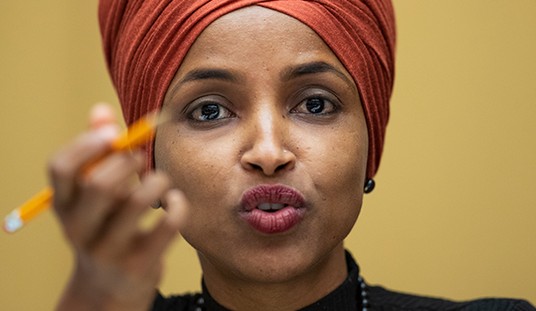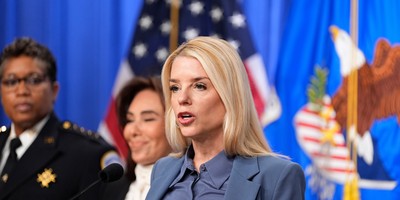 From Afghanistan to the economy, the to-do list facing the president of the United States is extensive and overwhelming. Townhall breaks down the challenges Obama inherited ... from himself.
From Afghanistan to the economy, the to-do list facing the president of the United States is extensive and overwhelming. Townhall breaks down the challenges Obama inherited ... from himself.
From Townhall Magazine's December feature, "The Next Four Years" by the Townhall Staff:
For four years, President Obama and his team never failed to remind Americans of the state of the country he inherited from his Oval Office predecessor. The mess left at the end of Obama’s first term, however, makes the George W. Bush years look gift-wrapped. From the debt to entitlements to health care and education, the next four years promise a gauntlet of challenges the White House must address sooner rather than later.
Challenges Abroad
The Eurozone and the Global Economy: On January 20, the president faces an even more questionable global economic outlook than previous administrations. Balance of global economic power has been shifting away from Europe toward Asia and South America. As the Financial Times pointed out, this is due in part to the growing clout of emerging nations, such as Brazil and India, but the change has been accelerated by the difficulties “advanced economies” have experienced in rebounding from the global economic meltdown.
With Europe, the president will face a problem with no easy answer and one that he has little to no control over. Unemployment rates top 20 percent in a few countries, and several have needed bailouts. Protests (some violent) in reaction to austerity measures are the new normal. Wealthy individuals consider fleeing due to more socialized and hostile governments, and questions of the euro—and even the European Union itself—breaking apart abound. The president will face great uncertainty in this region as he has to wait, with the rest of the world and financial markets, for European leaders to implement a viable solution.
Recommended
Unfortunately, the global economic problems do not stop in Europe. No country is immune from the woes of another. The consequences from Europe’s multinational debt crisis have led to an “estimated 11-year low” for growth in emerging Asia, according to Businessweek. Growth of the global economy will likely slow, according to the International Monetary Fund in a Voice of America report, and is only estimated to be 3.3 percent for 2012. Carefully and correctly handling the precarious situation of the U.S. economy within the current global economy will be a major endeavor. The president will have to deal with the negative consequences of a poor financial climate worldwide while preserving America’s formidable presence in the global market.
Afghanistan: Chief among the challenges that lie ahead for the next administration will be figuring out how to stop Afghanistan from remaining a terrorist haven, says The Long War Journal’s managing editor Bill Roggio, while concomitantly implementing an effective Pakistan policy. The rise of “insider attacks” by Afghan security personnel against coalition forces has also thrown a wrench in the transition of security responsibilities to the Afghan security forces as the 2014 withdrawal date for combat troops approaches.
The surge in Afghanistan marked one of the most significant foreign policy moves of Obama’s first term. The objectives, he announced in 2009, would be to deny al Qaeda safe havens in the country, reverse the Taliban’s momentum and help secure an effective Afghan government and security force that would enable the country to take charge of its own future. Three years later, the surge is officially over, but the situation appears unresolved.
According to The Long War Journal, the surge made considerable gains against the Taliban in the southern region of Afghanistan, but the insurgency is not confined to that area. Essentially, the Taliban have not been defeated—and neither has al Qaeda, Roggio tells Townhall.
“When you look at the military’s own statements on their raids against al Qaeda, it’s astounding. You can see that these groups maintain a strong presence, and we’ve been hitting [them] at a pretty good clip for years,” he says. “It is a systematic foreign jihadist movement that is pervasive throughout large areas of Afghanistan.”
Though there are many retrospective opinions about how the U.S. should have carried out policy in the 11 year-old war, Roggio believes the time to positively affect the situation has expired. Nevertheless, work in Afghanistan will not completely end in 2014, making it imperative that the next administration learns a valuable lesson: “There’s no short-term solutions to complex problems—especially in a country that’s been fighting in a protracted war,” Roggio says. ...
....
Challenge at Home
The Debt and the Deficit: A mix of tax reform and spending cuts are required to reduce the federal deficit. Once that is accomplished, politicians can move on to a more in-depth approach to reducing U.S. debt. Financing the nation will take a Congress working together to make sure the government is doing its best to provide an environment for citizens to succeed.
With the national debt now above $16 trillion, Washington should first think of the employers—what is it that will make them prosper and build their businesses. With lower taxes for business owners, some of their money will be freed up to take on new employees, produce a larger number of goods or services and therefore create a greater impact on the economy. More people would be employed, and, when someone is employed, they pay taxes on their income. Those extra tax dollars will then go to paying down the debt. A study by the Journal of Public Economics found that a 10-percent reduction in the corporate tax rate would increase the annual GDP by 1.1 to 1.8 percentage points.
U.S. leaders must also concentrate on spending cuts. Several government programs funded by the U.S. taxpayers are no longer necessary. The president will need to go through each program and decide whether it is absolutely vital to the success and safety of the American people.
Education: There is perhaps no more pressing—or neglected—issue facing the next president of the United States than reforming the country’s failing public schools. Only approximately 75 percent of public high school students graduate with their class. And American teenagers are significantly lagging behind their international peers on standard measures. According to scores released by the 2009 Programme for International Student Assessment, for example, the United States ranked 25th in math, 17th in science, and 14th in reading out of 34 industrialized nations. “This is an absolute wake-up call for America,” Education Secretary Arne Duncan told the Associated Press at the time. Why? Perhaps it’s because the United States spends more money per pupil (besides Switzerland) than any other nation on earth, as discovered by Education Next.
Worse, in higher education, just 56 percent of college students obtain four-year degrees within six years, according to a study conducted by the Harvard Graduate School of Education in 2011. These numbers suggest that the nation’s public school system is in serial decline, and thus failing to teach young people how to succeed and compete in an ever-expanding global economic market.
The first step to reforming the country’s broken educational system is to increase competition and choice. For decades, students (especially in poverty-stricken rural areas and inner cities) have had no choice but to attend perpetually failing schools. But recent studies indicate that publicly funded charter schools and voucher programs are two innovative and increasingly effective ways to give the disadvantaged an opportunity to be successful. For example, a joint study conducted by the Brookings Institution and Harvard University showed, based on evidence from New York City, that African-American students given taxpayer-funded vouchers to attend private elementary schools were 24 percent more likely to enroll in college.
Developing ways to improve the American public education system—through competition, innovation and school choice— will be one of the most significant challenges facing the next president of the United States.
See what else made our list of challenges by picking up a copy of the December issue of Townhall Magazine.

























Join the conversation as a VIP Member